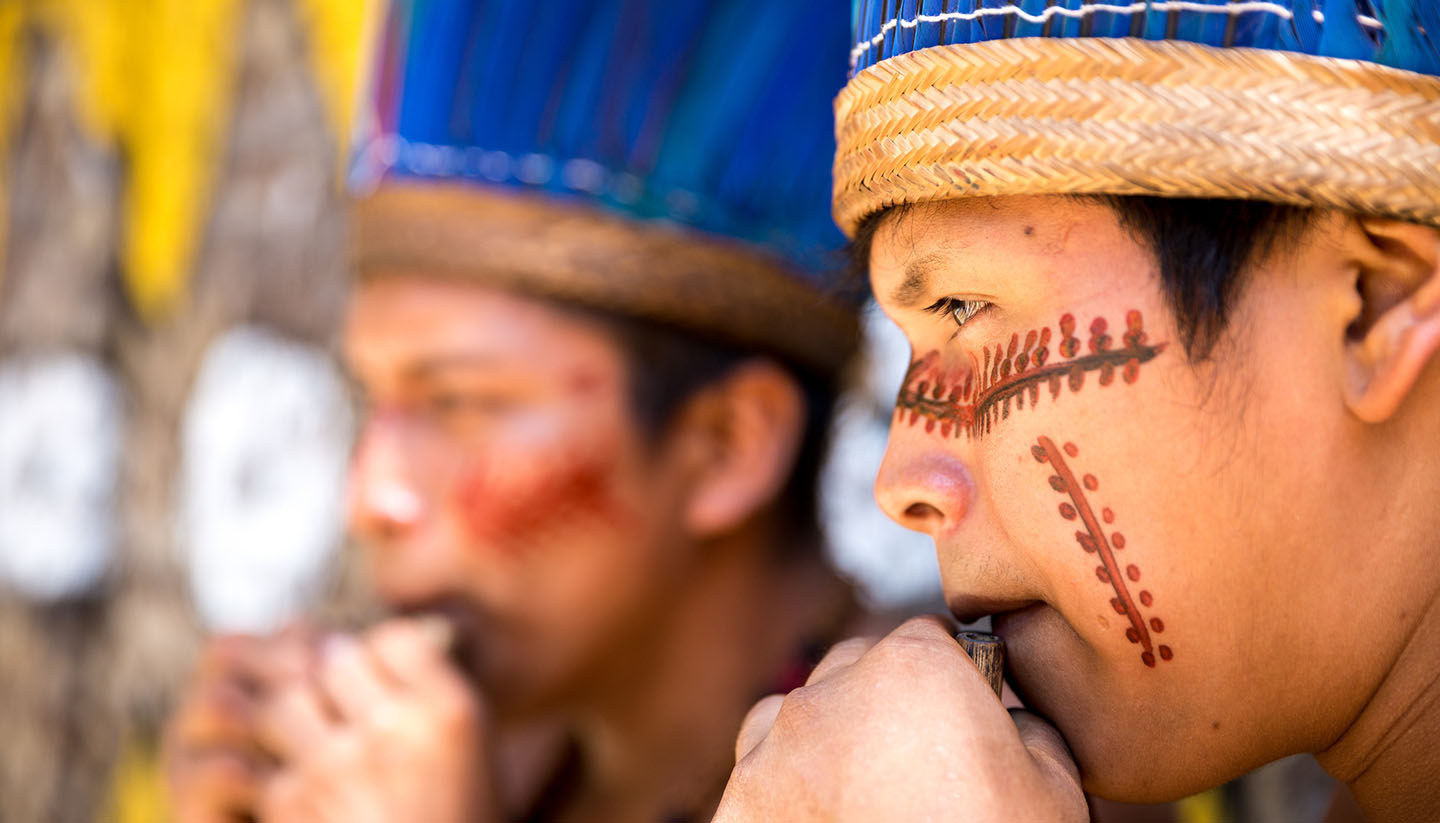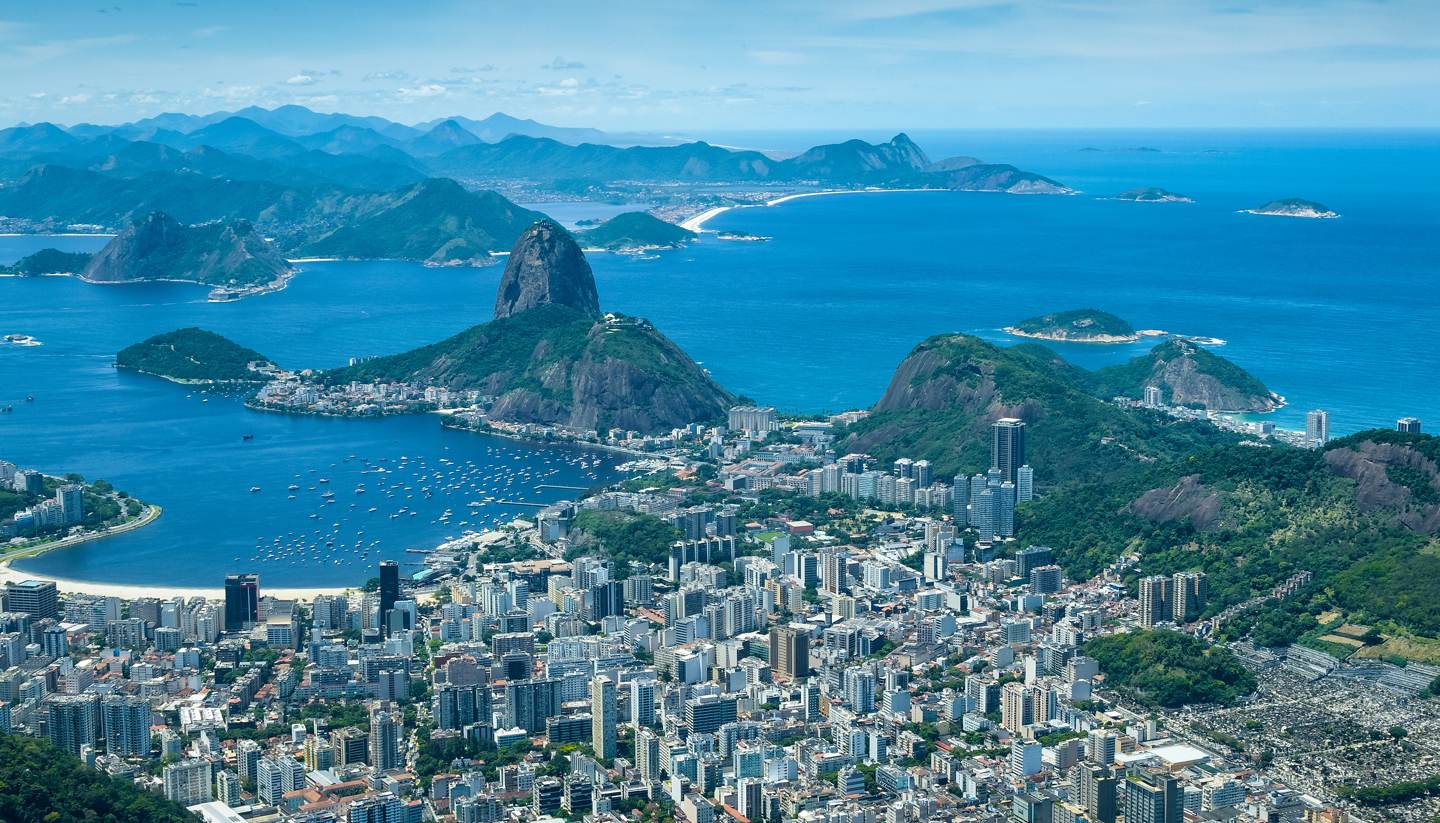Getting Around Brazil
Air
Brazil has one of the largest internal air networks in the world, and there are air services between all Brazilian cities. With such great distances between many of the most popular destinations, flying can be a worthwhile option, saving considerable time and money. Internal flights in Brazil are possible with the shuttle service between São Paulo and Rio de Janeiro, a regular service from São Paulo to Brasília and a shuttle service from Brasília to Belo Horizonte.
At weekends and main holiday times (ie Christmas and Carnival) it is advisable to book seats as the services are well used. Panrotas (www.panrotas.com.br) gives all timetables and fares for internal air travel. Gol (www.voegol.com.br) and LATAM (www.latam.com) operate the largest number of domestic routes. Airport transfers are available between all major centres.
Air passes
LATAM Brazil Airpass (www.latam.com) allows travel on internal TAM flights for up to 30 days. The basic pass includes four flights to any destination in Brazil.
GOL's Brazil Airpass (www.voegol.com.br) allows up to nine domestic flights on the GOL network. It's available to foreign visitors and Brazilians living outside Brazil, and must be bought in conjunction with an international flight operated by GOL, Air France, Delta or KLM.
Azul Airpass (www.azulairpass.com) is available to anyone flying into Brazil on either Azul or United. It allows unlimited flights within Brazil for 10 or 21 days.
Air Note
Always re-confirm flights (at least once); delays and over-bookings do happen. If you change any flights on your airpass be sure to cancel the original booking otherwise the airline may consider it a ‘no-show’ and cancel all your other flights.
Road
There is no shortage of roadside filling stations; those on major routes have lanchonetes (diners) and other facilities, often open 24 hours.
Side of the road
RightRoad Quality
Road conditions vary; state roads and toll roads are generally very good, though lesser routes (including federal roads) are often liable to damage from heavy rain, including potholes and fallen trees. Drivers should also look out for road humps, which can damage the underside of vehicles if taken too fast. Wandering domestic animals, particularly in rural areas, are another hazard.
Traffic jams within cities are common, particularly during rush hours and before long weekends.
Road Classification
Federal highways crisscross the country between major cities and are denoted by the letters BR plus a number. BR-101 is the longest in the country, running for nearly 4,800km (2,980 miles), from Natal south to Florianópolis, via Rio de Janeiro.
Smaller roads take the initials of the state (eg RJ for Rio de Janeiro) plus a number.
Car Hire
International companies operate from major airports and main city centres; the most common are Avis and Hertz. Localiza (tel: 0800 979 2000, in Brazil only; www.localiza.com.br) is one of the main Brazilian companies. Drivers are generally required to be at least 21 years old.
Taxi
All major cities have plenty of taxis, particularly recommended late at night. Official taxis, such as the distinctive yellow-and-blue Rio taxis, are the most reliable. Mini-cabs, with pre-paid tickets, are also available at international airports.
Taxis are metered and passengers should insist that the meter is turned on: the day-time rate is shown by a little flag marked 1 on top of the meter. The higher rate (after 2000, on Sundays and bank holidays) is shown by a flag marked 2. Outside of cities and main tourist sites, taxis may not have meters, in which case agree on the fare in advance. Tipping taxi drivers is not normal practice.
Bike
Brazil is not a bicycle-friendly country on the whole; only a few cities, such as Rio de Janeiro and Curitiba, have dedicated bicycle lanes. Rio has a bikeshare system, Mobilicidade (www.mobilicidade.com.br). São Paulo's scheme is called Bike Sampa (www.mobilicidade.com.br/bikesampa.asp).
In view of the vast distances, heavy traffic and aggressive driving practices, cycling around the country is not recommended for most visitors.
Coach
Long-distance coach travel is a great way to get around Brazil, with an excellent network of inter-city routes offered by hundreds of different companies. Fares are economical and coaches are safe and comfortable, with all the usual modern facilities.
Luxury overnight services (leitos) connect the major cities and popular destinations such as Foz do Iguaçu. There are no nationwide companies, but all cities have a central bus station (rodoviaria), where you can book your journey in advance with a choice of operators.
Regulations
The minimum driving age is 18. The speed limit is 120kph (74mph) on most national highways and 30-90kph (19-55mph) in urban areas. Passing on the right is forbidden. Seat belts must be worn by drivers and passengers. Drivers may use only ‘hands-free’ phone operation while at the wheel.
Breakdown services
In the event of a breakdown contact your car hire provider. For emergencies call 193.
Documentation
An International Driving Permit is usually required, although foreign licences are also accepted by most major car hire companies.
Road note
Brazilians generally drive fast and dangerously; for example, the typical method of overtaking is to drive at speed up close behind the car in front until it moves out of the way. Brazil has one of the highest number of traffic-related deaths in the world.
Urban travel
There are extensive and economical bus services in all the main centres, often also with air-conditioned express executive coaches running airport-to-downtown shuttle services at premium fares. Buses in major cities, including Rio, are massively overcrowded in rush hour however, and crime is a common problem, particularly at night.
São Paulo has a modern metro subway system, and Rio has a three-line metro. Though both systems are relatively small, the trains are clean, safe, economical and reliable. Fares are generally regulated, with interchange links between key bus and metro/rail lines, for instance on the MetroBus feeder bus linking the Rio metro with Copacabana.
Rail
Passenger rail connections in Brazil are virtually non-existent, apart from a few inner-city commuter lines in São Paulo and Rio de Janeiro. A few scenic tourist lines still run, notably the Serra Verde Express (www.serraverdeexpress.com.br) operating services from Curitiba to Morretes in Paraná, and from Campo Grande to Miranda in the Pantanal.
Water
Ferries serve most coastal ports. One company, Barcas (tel: 0800 721 1012, in Brazil only; www.barcas-sa.com.br), operates ferries between Rio de Janeiro and Niterói, and between Angra dos Reis and Ilha Grande. The daily commuter ferry to and from Niterói is very popular, offering amazing views of Guanabara Bay, and much quicker than the long and often traffic-clogged road route.
River transport is the most efficient method of travel in the Amazon Delta. The main hub is Manaus, with ferries going eastwards along the Rio Amazonas, to Belém and Santarém, or upriver from Manaus on the Rio Solimões towards the Colombian border at Tabatinga. Many different companies offer regular departures from Manaus, operating out of the main port, Estação Hidroviária (www.portodemanaus.com.br), near to the Mercado Municipal.



